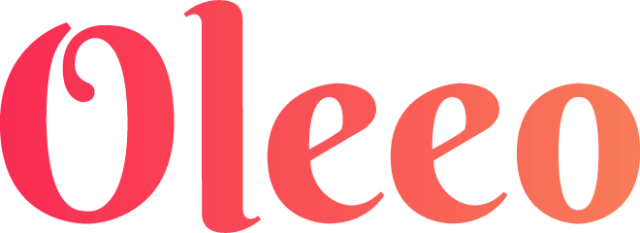Cloud Recruitment Software: Streamline Your Hiring

Recruitment is a labour-intensive process with many tasks to complete and a ton of information to manage. Writing and posting job ads, sifting through CVs, scheduling interviews, communicating with candidates… it’s hard to do all of that manually without making mistakes.
That’s where cloud recruitment software comes in—and it has many other benefits besides streamlining the hiring process. Let’s take a closer look.
What is Cloud Recruitment Software and How Does it Work?
Cloud recruitment software is a tool for managing and streamlining a company’s recruitment processes. It’s designed to save you time and money by automating workflows and making it easier to find and hire the right candidates.
It’s a type of software-as-a-service (SaaS), so rather than buying and installing the software on your premises, you lease it from a vendor on a subscription basis. The service is provided over the internet and is accessible from any internet-connected device. The data is stored in a remote data centre.
Instead of using a collection of separate systems for tasks like job posting, interview scheduling, and background checks, cloud-based recruitment software typically comes as an all-in-one platform. That means you can manage the entire process in one place.
The best cloud recruitment software will combine an Applicant Tracking System with features like candidate management, CV parsing, analytics, and reporting.
The Benefits of Cloud Recruiting Software
Cloud recruitment software brings several advantages for businesses. Here are just a few:
It saves time
Cloud recruiting software is designed to be fast and reliable, with Recruiting Automation to speed up time-consuming tasks. For example, it enables you to post job ads simultaneously across multiple platforms and scans hundreds of CVs to help you find the most suitable candidates.
There’s no need for employees to manually transcribe information, which also reduces errors. And with all data and documentation in one central hub, you won’t waste time searching through files or email threads. This faster hiring process means you can get people into roles quickly.
It cuts down on your costs
By reducing Time To Hire, you’re also reducing cost per hire. There are fewer errors to delay the hiring process, and the software also improves employee productivity. You can easily set up virtual recruiting via online interviews and careers fairs, minimising travel and hosting expenses.
Cloud software has a minimal upfront cost compared to on-premises systems. The vendor takes care of maintenance and upgrades, and you only pay for what you use. Installation is swift, and the software is easy to use without extensive training.
It improves communication and collaboration
Cloud based recruitment platforms are ideal for collaboration. They typically have a central Recruiting Dashboard where everyone can see the latest information, and it’s easy to share CVs, interview notes, and candidate feedback. Your team can get together to discuss applications and strategies even if they’re working remotely.
But it’s not just about internal communication. These tools also help you keep candidates updated on the progress of their applications and enable you to organize personalised email campaigns as part of your recruitment strategy.
It can be tailored to suit your specific needs
Another benefit of cloud SaaS software is that it’s not restrictive. You’ll have a choice of pricing tiers or a fully tailored plan, which you can amend whenever your needs change. Add extra users if you’re expanding the team for a busy period, or remove them when things are quiet.
You can also add features, while customisation options include setting up automated workflows and specific reports. The best software integrates with your existing systems, such as HR, providing further scalability.
It’s accessible from anywhere
Cloud-based staffing software is accessible on any device, anywhere, any time (so long as you have a reliable internet connection). That makes it perfect for remote and hybrid companies, as well as recruiters who need to check the system while attending a careers event, for example.
It enables you to set up a BYOD (bring your own device) culture in physical offices and also makes it easy for global businesses to recruit from around the world. With a central database, everyone sees the same information no matter where they’re located.
It’s better for the environment
If all your documents are stored in the cloud, you don’t have to use physical paper or printing ink. That’s one reason why cloud recruiting is eco-friendly. It also offers lower energy consumption, as you don’t need servers on your premises—all of the required processing power is in the vendor’s data centre.
Plus, you can minimise travel by using virtual recruitment, interviewing, and onboarding candidates online. Remote colleagues don’t need to get together in person for meetings, either.
It keeps sensitive information safe and secure
Recruiters have a lot of sensitive data to handle, from CVs to contact details to interview notes. Cloud software lets you keep all this information digitally in one place instead of on physical paper in filing cabinets. This makes it less likely that important documents will go astray.
And, as long as you choose software with top-notch security, such as data encryption and access control, you’ll be protected against potential data breaches or non-compliance.
Key Features to Look Out For in Cloud Recruitment Software
Every cloud recruitment system is slightly different, but here are some essentials to check for:
- Applicant tracking system (ATS): This tool can track applicants throughout the recruiting and hiring process, using automation to enable high-volume recruitment and reduce time-to-hire. It helps you to create accurate job descriptions and post them in the right places and allows the whole team to view an applicant’s status at any time.
- CV parsing: This feature will scan multiple CVs to flag the best candidates and filter out unsuitable ones based on your own criteria. You can ask the tool to look for specific skills and qualifications and search for relevant keywords in CVs uploaded to job boards and social media sites.
- Candidate management: Recruiters need to provide timely communication with applicants, so look for software that automates and schedules messaging to keep them in the loop. Convenient tools like auto-fill online applications and self-service interview scheduling will also appeal to candidates.
- Virtual recruiting: Choose a Virtual Recruiting Solution that lets you hold virtual interviews and events, plus remote onboarding and training. Some tools enable pre-recorded and one-way video interviews for high-volume recruitment, plus mobile registration and check-ins for online events.
- Analytics/reporting: With these tools, you can gain insights into the performance of your Recruitment Funnel and use the results to improve. You can identify trends, such as which applicants are responding to which posts, and ensure you maintain diversity.
- Integrations: It’s ideal if your software can integrate with your existing systems, such as video conferencing, calendars, and HR tools.
- Security: Look out for solutions that perform regular backups and include data encryption, user access controls, and compliance with privacy regulations like GDPR.
Utilise Cloud Recruitment Software for a Smoother Hiring Process
As we’ve seen, cloud recruitment software is crucial if you want to streamline your hiring processes and recruit at scale. By keeping all your information in one central hub, you’ll save time and improve collaboration. The data is accessible from anywhere, so it’s easy to stay updated (and keep candidates in the loop, too).
If you choose an advanced solution like Oleeo, you can customise the software with bespoke workflows to meet your company’s unique needs. It comes with AI and automation to enable high-volume recruitment, and the applicant tracking system can reduce your time to hire by 50%.
Alongside CV Parsing, other handy features include virtual recruiting, events management, and analytics. You can use AI to detect and remove unconscious bias from your processes and allow candidates to complete applications from their social media profiles for maximum convenience.
FAQs about Cloud Recruitment Software
How does cloud recruitment software differ from traditional recruitment systems?
Traditional recruitment systems involved either manual spreadsheets and paper documents or several different types of software for different tasks, all installed on your premises. Cloud recruiting software is completely digital and gives you a unified platform that’s owned and managed by the vendor. That makes it more affordable and efficient. Everything is in one place, and it’s easy to automate workflows and communicate with colleagues and candidates in any location.
Is cloud recruitment software secure?
Cloud-based recruiting software is typically more secure than an on-premises system. For example, Oleeo is accredited to ISO 27001:2013 and monitored using regular security audits, compliance checks, and protection of sensitive data. That’s why it’s used by law enforcement and healthcare organizations as well as businesses. Plus, with everything housed in the cloud, you’ll know exactly where all your information is.
How does cloud recruitment software improve the candidate experience?
Apart from making life easier for recruiters, cloud software also benefits candidates. It gives them the convenience of applying online with auto-fill forms and receiving regular updates on the progress of their application. Virtual interviews and events also enhance the experience. Cloud recruiters can also record candidate feedback and use it to make further improvements.
How do I choose the right cloud recruitment software for my organization?
There are a lot of cloud recruitment solutions out there, so make sure you do plenty of research and take advantage of free demos and trials of the software. Some tools will have free versions, but these probably won’t offer as much functionality—and they’re not as scalable. Check exactly what the plan includes and choose the most suitable software for your organisation.



